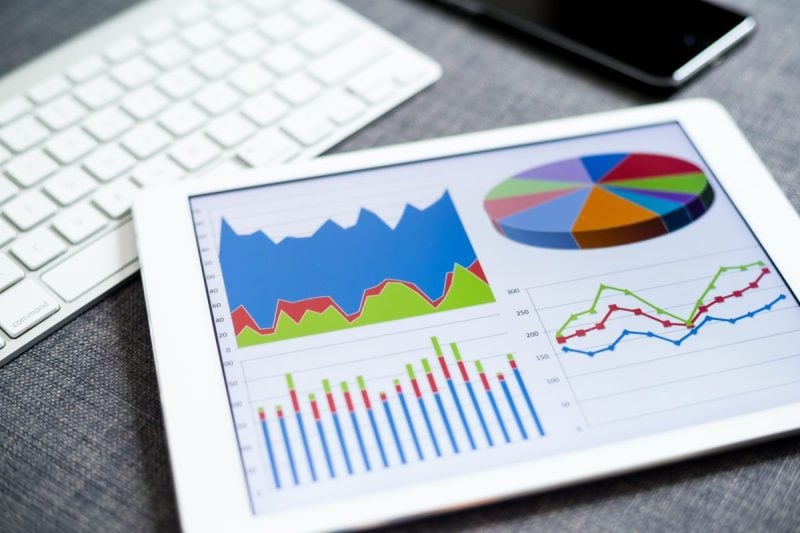Many people on social media, from multi-million dollar businesses to casual users have wondered what the best times to post on Instagram are. Unfortunately, there isn’t one universal answer for when to post on Instagram. It depends on a number of different factors. Learning how to post at the best times can have a big impact on followers and engagement.
It also requires an understanding of Instagram’s algorithm, which changes often. The surge in the popularity of social media marketing has made learning these new skills essential. Instagram has just under 1 billion active users each month, making it one of the most important social media networks to use for marketing.
Understanding The Instagram Algorithm
- 1 Understanding The Instagram Algorithm
- 2 What are the Best Times to Post on Instagram?
- 3 How to Find Your Target Audience
- 4 What to Post on Instagram
- 5 Finding the Best Time to Post on Instagram
- 6 FAQs about the Best Times to Post on Instagram
- 6.1 1. Do the “best times to post” apply to all types of Instagram content (posts, stories, reels)?
- 6.2 2. How do I find my specific audience’s peak activity times if the general guidelines don’t work for me?
- 6.3 3. Should I post at the same time every day, or vary my posting schedule?
- 6.4 4. How does my business type or industry affect the best posting times?
- 6.5 5. Why does Instagram prioritize timeliness in its algorithm if it’s not chronological anymore?
- 6.6 6. How often should I review and adjust my posting schedule?
- 6.7 7. Is it better to post less frequently at optimal times or more frequently at various times?
As of 2021, Instagram is 11 years old! What started as a simple app meant to share pictures has grown into so much more. In addition to pictures, users can now post stories, reels, and long-form content on IGTV. The app has also become a great place for businesses to engage with their audience and get their products out there.
Knowing the best ways to use the app (for marketing or personal use) often means working around Instagram’s algorithm. Since the app moved away from a chronological timeline, this has gotten a lot more difficult. Being aware of the best day and time to post on Instagram is a good start, but the algorithm is a bit more complicated.
Instagram doesn’t disclose all of the factors its algorithm uses to sort through content. Instead, they release general information about what the algorithm is looking for. According to Instagram, there are 6 key factors: interest, relationship, timeliness, frequency, followers, usage.
#1: Interest
The Instagram algorithm pays attention to things that you might like. If it thinks you have a high chance of “liking” a post, it will show up in your feed. If you like, share, or comment on certain kinds of content, you will end up seeing those types of posts first.
#2: Relationship
The algorithm also wants to make sure that friends, family, and accounts people care about show up in their feeds. Instagram will try to figure out a person’s relationship (or interest level) to an account they follow by monitoring their engagement. The accounts a person engages with the most will tend to show up first and most often.
#3: Timeliness
Instagram still wants the latest and most interesting posts to show up in people’s feeds. If you post at a time when your followers are active, you have a better chance of getting more engagement. This is a great reason to learn the best day and time to post on Instagram.

#4: Frequency
Instagram’s algorithm even pays attention to how often a person checks the app! If they scroll through multiple times each day, then their feed will be more chronological. If they check the app less often, the content will be sorted by interest.
#5: Followers
Users who follow a lot of accounts run the risk of missing content from a lot of them. If a large percentage of your followers is inactive, it can mess with your chances of being seen. Occasionally removing “ghost” followers can help solve this problem.
#6: Usage
Similar to #4, the time someone spends on Instagram affects their feed. If someone spends a lot of time on the app, they might eventually run out of content. When this happens, Instagram will suggest content from new accounts based on what you like.
What are the Best Times to Post on Instagram?
As mentioned above, one of the key elements of using the platform effectively is knowing when to post on Instagram. As a basic rule, the best times to post on Instagram are between 10 AM and 3 PM CDT (Central Daylight Time).
A recent study done by Sprout Social found that:
- Posting at 7 AM (CDT) Wednesday through Friday is one of the best ways to drive up engagement. This is most likely because people check their phones right when they wake up!
- Posting from 11 AM to 3 PM (CDT) on weekdays is also a great way to increase engagement. Most social media users check their feeds during their lunch. They may also scroll through during breaks at work.
- If you want to post on the weekend, make sure to post on Saturdays around 10 AM (CDT). This is when people are most likely to be hanging out with friends (and checking out their social media).
- Sundays are the worst day of the week to post because they have the lowest levels of engagement.
Best Time to Post on Instagram on Each Day of the Week:
- Monday: 11 AM to 2 PM
- Tuesday: 10 AM to 3 PM, 7PM
- Wednesday: 7 AM to 4PM (peaks from 11 AM to 2 PM)
- Thursday: 10 AM to 2 PM, 6 PM to 7 PM
- Friday: 9 AM to 2 PM
- Saturday: 9 AM to 11 AM
- Sunday: 8 AM to 2 PM (lowest engagement day of the week)
Even though these times typically have the best engagement, it is extremely important to also consider your target audience. Every brand’s audience is unique. Take a look at your Instagram Insights to see when your followers are most active and likely to engage.

How to Find Your Target Audience
Even if you know the best time to post on Instagram for the general public, this might not be completely accurate for your followers. You’ll also want to find out what motivates and inspires them so that you can post content that they will respond to. Researching your target audience is one of the most important strategies when using Instagram for marketing. There are a few key methods for defining your target audience on Instagram.
1 – Start with Creating a Basic Profile
If you are running a business, you probably already have an idea of what your average customer is like. Create a basic profile of this person and research what they might like and dislike. Start with the basics and personalize it as you go. Use this info to build a “buyer persona.”
2 – Research Your Competition
To help build a profile of your target audience, you can also research your competitors. Find similar brands and view their content. See what they are posting and how their followers are engaging. You can also research what kind of followers they have. You might find an audience segment that you’ve missed for your own company.
3 – Use Analytics
Looking at your Instagram analytics is a great way to get to know your current audience. In the “Audience” section of Instagram Insights, you can find the demographic details of your followers. This includes info like age, gender, and location. If you combine this with your other research, you will be able to build a complete profile of your target audience.
4 – Instagram Polls
Lastly, a great way to learn about your audience is to ask them directly! Use the Instagram polls feature to ask your followers questions about what they are interested in. You can also ask them what type of content they would like to see from you next.

What to Post on Instagram
While it’s very important to know the best time to post on Instagram, it’s also good to know what to post. Instagram content creation is especially important when trying to build your brand’s presence online. Since Instagram was made to showcase pictures and videos, visual content is the most important way to market your brand.
There are lots of options for visual content. If you are running a business, you can post fun and innovative pictures of your products or services. It is also a good idea to include product tags, so users can click through the photo and purchase. You can also provide behind-the-scenes looks at your company. This can help promote transparency and build trust with your audience.
Along with your visual content, it is also helpful to include relevant hashtags in your posts. Hashtags can help bring your content to users who aren’t already following you. Make sure to stick to the topic of your post and try to be specific. There are lots of websites that can help you find relevant hashtags based on your topic.
Finding the Best Time to Post on Instagram
After reading this article, you should know how to find your target audience, what content to post, and the best times to post on Instagram. These skills alone can make a huge difference in your social media marketing strategy. Still, keeping up with all of the different social media platforms by yourself can be tough.
If you’re looking for help managing your profiles, the experienced team at SEO Design Chicago can create a custom strategy for you. With a variety of social media management packages to choose from, SEO Design Chicago help bring your social media strategy to the next level!
FAQs about the Best Times to Post on Instagram
1. Do the “best times to post” apply to all types of Instagram content (posts, stories, reels)?
While the general timing guidelines apply to most content types, each format may perform slightly differently. Regular feed posts typically follow the 10 AM to 3 PM CDT pattern, but Instagram Stories often perform well throughout the day since they appear at the top of the feed. Reels may get more engagement during evening hours when people have more time to watch videos. The key is to test different times for each content type and monitor your Instagram Insights to see what works best for your specific audience and content mix.
2. How do I find my specific audience’s peak activity times if the general guidelines don’t work for me?
Use Instagram Insights to analyze your audience’s activity patterns. Go to your business profile’s Insights, select “Audience,” and look at the “Most Active Times” section. This shows when your specific followers are online by day and hour. You can also track your post performance over several weeks, noting which posts get the most engagement and when they were published. Consider your audience demographics too – if you target night shift workers or international audiences, their peak times will differ significantly from general recommendations.
3. Should I post at the same time every day, or vary my posting schedule?
Consistency is important, but don’t be afraid to experiment with different times to maximize reach. Consider posting at your primary optimal time most days, but occasionally test other high-engagement windows to capture different segments of your audience. For example, you might post at 11 AM most days but try 7 AM on Wednesdays or 7 PM on Tuesdays. This strategy helps you reach followers who might be active at different times while maintaining the consistency that the Instagram algorithm favors.
4. How does my business type or industry affect the best posting times?
Your industry significantly impacts optimal posting times. B2B companies often see better engagement during business hours (9 AM – 5 PM weekdays), while restaurants might perform better around meal times (11 AM – 1 PM, 6 PM – 8 PM). Fitness brands often succeed with early morning posts (6 AM – 8 AM) when people plan workouts, while entertainment brands might see better evening engagement. Consider your customers’ daily routines and when they’re most likely to engage with your type of content.
5. Why does Instagram prioritize timeliness in its algorithm if it’s not chronological anymore?
While Instagram moved away from a purely chronological feed, timeliness is still a ranking factor because fresh content tends to be more relevant and engaging. The algorithm balances recency with other factors like relationship and interest. If you post when your audience is active, you’re more likely to get immediate engagement (likes, comments, shares), which signals to the algorithm that your content is valuable. This early engagement boost can help your post stay visible longer and reach more people beyond your immediate followers.
6. How often should I review and adjust my posting schedule?
Review your posting times monthly or quarterly, depending on how frequently you post. Instagram Insights provides data on your audience’s activity patterns, which can shift based on seasons, holidays, or changes in your follower demographics. Major events, daylight saving time changes, or shifts in your audience’s lifestyle (like back-to-school season) can all impact optimal posting times. Set a reminder to check your analytics regularly and be prepared to adjust your strategy based on performance data.
7. Is it better to post less frequently at optimal times or more frequently at various times?
Quality and timing typically beat quantity. It’s better to post less frequently at times when your audience is most active and engaged rather than posting multiple times at random hours. The Instagram algorithm favors engagement rate over posting frequency, so a single well-timed post that receives high engagement will perform better than three posts with low engagement. However, if you can maintain quality while posting more frequently during peak times, that can help increase your overall reach and engagement. Focus on finding the sweet spot between consistency, quality, and optimal timing for your specific audience.




Contact Us today!